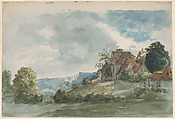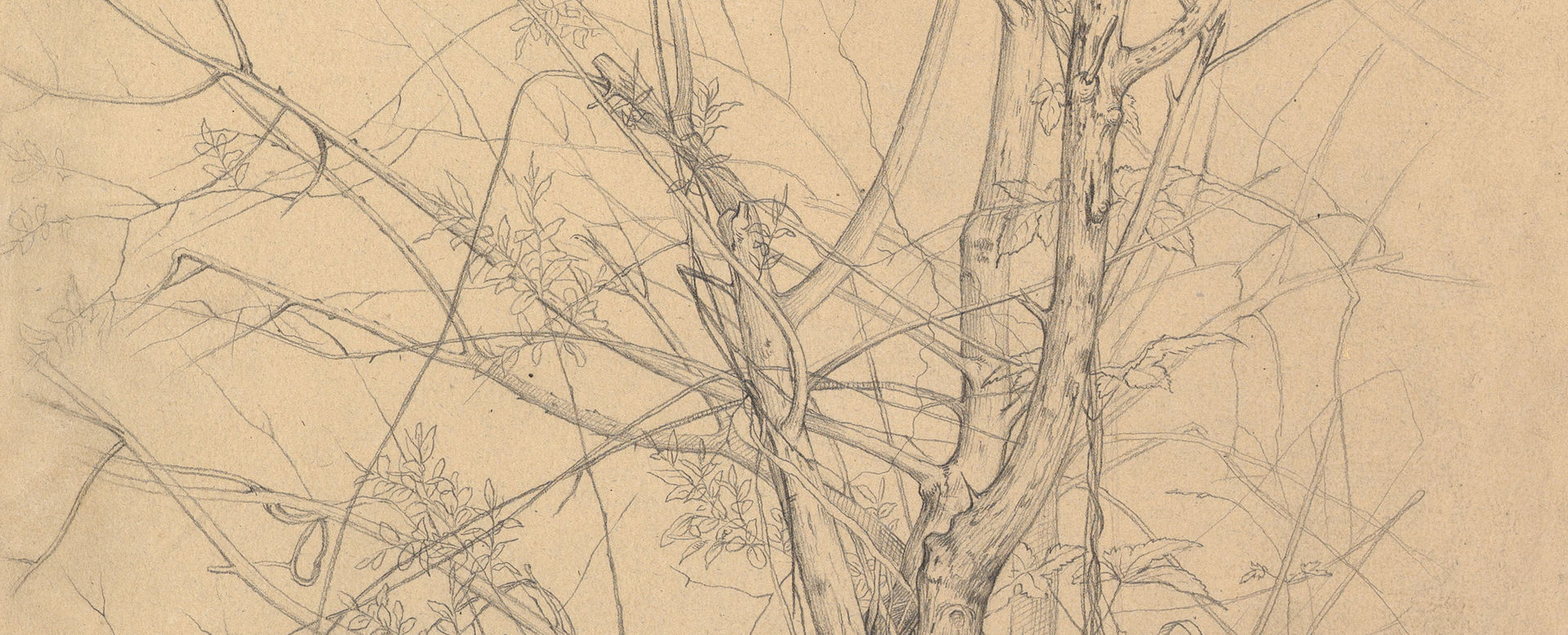Cottages in an extensive landscape
William Henry Hunt British
Not on view
Hunt’s career forms a bridge between English watercolor painting of the later eighteenth century, and Victorian masters such as John Frederick Lewis, Myles Birket Foster and the Pre-Raphaelites. At sixteen, he began a seven-year apprenticeship with John Varley, became a sketching companion of fellow student John Linnell, and took classes at the Royal Academy Schools. Most significantly, Hunt joined the circle of young artists who gathered on winter evenings at the London house of Dr. Thomas Monro to copy drawings by Canaletto and John Robert Cozens—and made summer visits to his patron's house near Bushey in Hertfordshire. The hilly landscape in this beautifully fresh early watercolor may lie near the latter. Within a landscape evoked by freely applied washes, architectural forms are used to add definition. Reed pen, which Hunt had mastered by copying Canaletto, adds defining lines to the soft washes evoking field and foliage beneath a rapidly moving summer sky. Ruskin admired Hunt, collected his work, and suggested in 1859 that in "the particular gifts of colour there are only one or two of the Pre-Raphaelites and William Hunt of the Old Water-Colour Society who would be safe guides. And as quite a safe guide, there is nobody but William Hunt."
Due to rights restrictions, this image cannot be enlarged, viewed at full screen, or downloaded.




